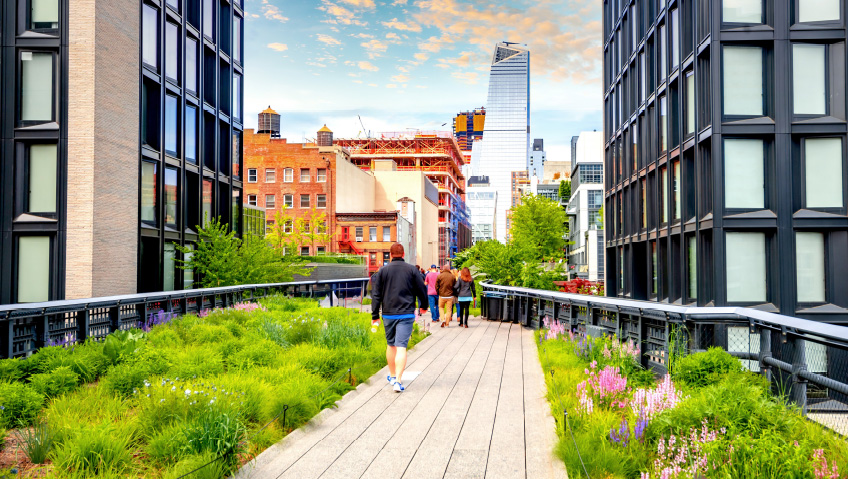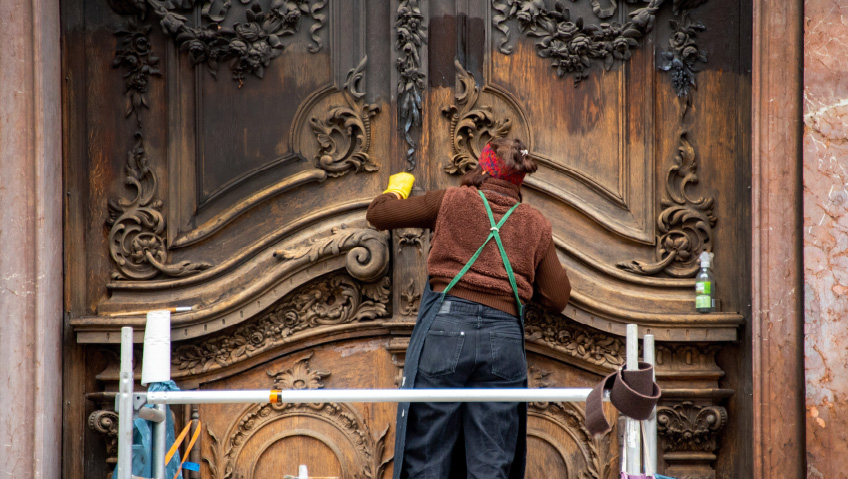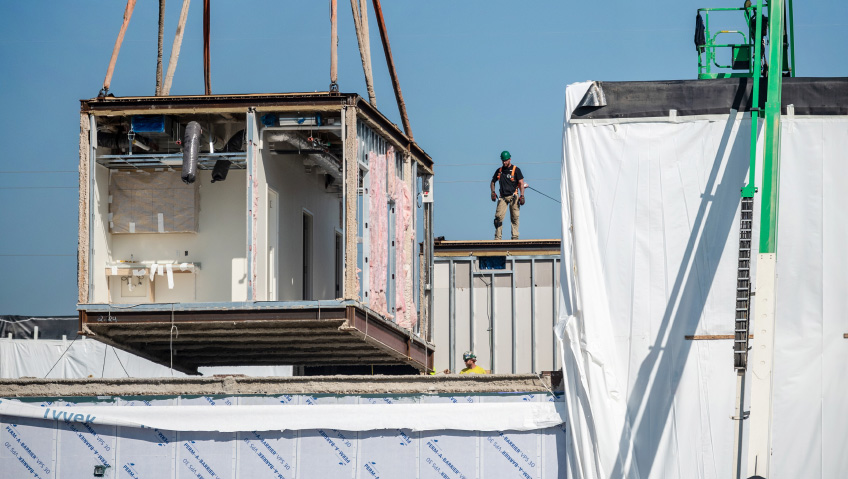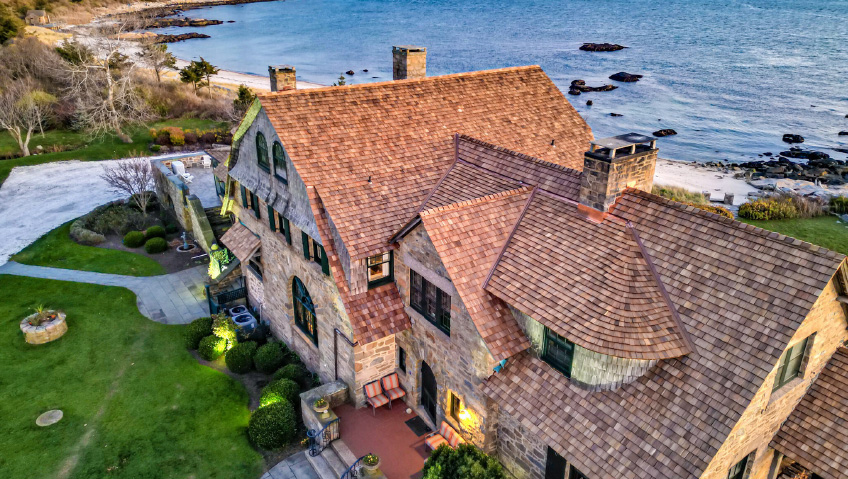Consider this: three-quarters of the infrastructure that will exist by 2050 has yet to be built, according to the United Nations. That rate of building is equivalent to adding an entire New York City every month for 40 years, just to make room for population growth and development.
At a time when we’re more conscious than ever about greenhouse gases and climate change, it’s important to recognize that the substantial amount of energy used to demolish and create new buildings has its own significant impact. Campaigners against the demolition and redevelopment of London’s Marks & Spencer art deco flagship store in London claimed as much as 40,000 tonnes of CO2 would be produced by the project. After years of opposition, the plan got the green light in 2024, but demolition has yet to start.
New solutions to traditional demolition and redevelopment are emerging, however. One that is gaining momentum is adaptive reuse, also known as recycling and conversion—making the most of what we have.
Adaptive reuse is the process whereby buildings are used in a different capacity than their original purpose. Typically, these buildings are at the end of their lifespan, so reuse allows for elements of their design, appearance, cultural heritage or historic significance to be saved from demolition in processes that consume a significant amount of energy. In this way, they also serve a function that could bring new populations through their doors. Historic places are transformed and vacant buildings become opportunities to revitalize communities as new homes, offices, hotels, and more.
Some of the most well-loved places in the world are adaptive reuse projects. The Tate Modern Gallery in London was converted from a former power station. The Distillery District in Toronto was home to an industrial distillery that’s been transformed into a pedestrian and commercial area with a theatre and outdoor performance space. And the High Line in New York City was re-imagined and repurposed from a former railway line into a public park and beautiful urban walkway.
Research backs the environmental benefits. When buildings are reused instead of demolished and replaced, up to 90 percent of their materials can be salvaged so they don’t end up in landfills, according to the United States Environmental Protection Agency (EPA). Construction and demolition is one of the largest waste streams, responsible for an estimated 30 percent of total solid waste.
The World Economic Forum, in consultation with global experts and municipalities, has developed a model policy on adaptive reuse to support initiatives that ultimately create better communities. Projects work to “boost local economies and contribute to regional productivity and competitiveness by attracting investment and creating workforce development opportunities, including temporary and permanent jobs,” the policy states. It also outlines the potential to increase the market value of built assets, increasing property values and property tax revenues, creating a ripple effect of additional revenues for local governments to improve schools, emergency services, public transportation, and affordable housing.
Top of mind for the construction industry is recognizing adaptive reuse as a strategy for maximizing the operational and commercial performance of built assets. There’s a general misconception that new energy-efficient buildings are the way to move toward carbon neutral goals and sustainability. In fact, as Autodesk reports, a new energy-efficient building can take anywhere from 10 to 80 years to offset the environmental impact of its own construction process. “Think of buildings as very large manufactured goods; prolonging the lifespan of existing structures is a sustainable strategy that’s becoming a necessity as the world population grows more urbanized.”
Adaptive reuse addresses carbon burdens that already exist in the built environment. As Carl Elefante, former president of the American Institute of Architects, has said: “The greenest building is the one that already exists.”
What makes adaptive reuse distinct from historic preservation? With the former, designers are not limited to using original building materials and methods. Instead, they can be innovative, incorporating recycled materials and leading systems. Projects can also earn Leadership in Energy and Environmental Design (LEED) certification, all while making the most of some stunning old factories with brick exteriors and large, light-filled windows.
The Roebling Lofts in Trenton, New Jersey are housed in a 1917 wire rope factory that produced wire rope for aircraft and cables for suspension bridges like New York City’s George Washington Bridge and the Golden Gate Bridge in San Francisco. Famously, John A. Roebling’s Sons Co. provided wires for Charles Lindbergh’s Spirit of St. Louis for its celebrated 1927 transatlantic flight.
The Roebling Lofts project preserved the exterior masonry, steel, and heavy timber framing. In a nod to its history, the wire rope testing machine is on display in the fourth-floor residents’ lounge. Architects designed for solar panels on the roof and recycled materials for kitchen and bathroom counters, including Richlite, an antibacterial surface made from recycled paper and resin. The backsplash tiles in the kitchens are made from recycled glass.
In another plus, this adaptive reuse project promotes neighbourhood development and green transportation. The pet-friendly building is steps from the Roebling Market, local restaurants and businesses, and public transportation.
In Brooklyn, the 1930s-era Lewis Steel Products factory has become loft apartments. The LEED Silver-certified Lewis Steel Building spans an entire city block and showcases original features like 12-foot ceilings, exposed brick walls, and beams of steel and wood. Now the manufacturing-centered area has morphed into a hub for a diverse and artistic community. There’s close proximity to public transportation and locally owned restaurants and shops, and the building itself features bicycle storage. The development team also focused on reducing energy and water use.
When you think about places where abandoned structures remain signs of economic prominence in days gone by, Detroit is a front-runner because of the auto industry’s moving production out of the city. It’s turning around, however, to become a model for economic resurgence, with major investments in the downtown, including Ford Motor Company’s commitment to overhaul Michigan Central Station into a 1.2-million-square-foot innovation campus. The project stared by drying out the 600,000-square-foot structure, which had been damaged by the elements since the last train left the station 30 years ago.
Michigan Central opened in fall 2024 as a tech and cultural hub to promote innovation in autonomous vehicles and urban mobility solutions. The walkable community is anchored by the train station and designed to help residents and businesses connect with the surrounding neighbourhoods and the city at large.
Ford Chair Bill Ford, great grandson of company founder Henry Ford, said attracting top talent to Detroit is “getting better” but noted that “it’s a tall order” to convince workers from California or the East Coast to relocate to Detroit and work for Ford, CNBC reports. “If you can show them a place like Michigan Central, not just in its beauty, which alone is incredible, but then talk about the kind of things that will be going on there, then it becomes, I think, a really valuable resource for the company going forward,” he said.
Lori Ferriss, co-founder of the Built Buildings Lab, makes the case that reusing existing buildings is not only good for the planet; it’s good for business. Adaptive reuse projects are outperforming new construction by delivering faster returns, reducing risk, and spurring community revitalization. Ferriss’s report drives the point home, exploring how developers can find both profit and purpose in adaptive reuse for existing buildings.
“One message I heard from almost everyone I spoke to, and that I continue to hear again and again in the field, is that in addition to making money, reuse is often a labor of love,” Ferriss tells Urban Land. “There is a special sense of pride, accomplishment, and often stewardship that comes from successfully renewing existing buildings. In an industry driven by financial returns, I think it’s important that we also recognize the delight and sense of community that comes from adaptive reuse.” When done well, adaptive reuse represents a clear win-win-win for communities, residents, and the environment.






